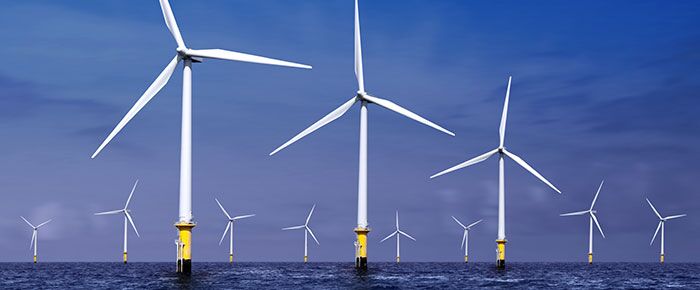
Energy
There are ambitious goals worldwide to increase the percentage of renewable energy sources in the overall amount of power generated. And yet, even established conventional power generation is developing at an impressive rate. Increasing global demand is driving innovation in the power generation industry at a speed not seen before.
High-performance stainless steels can help to meet requirements for safe, efficient, sustainable energy. Since stainless steel is 100% recyclable and can have numerous other beneficial characteristics, it is a material that is frequently used in connection with these innovations, such as in exhaust gas treatment plants and coal-fired power stations and in nuclear power stations. In the field of green power generation, there is also a need for components made of sophisticated materials that cover the full range of renewable energy sources, from installations for generating organic fuels, molten salt tanks and water power through to tidal power generation systems and solar power. High-tensile strength duplex stainless steels, for example, enable highly cost-effective solutions in terms of components for tidal power stations and offshore wind farms.
Environmental concerns
In the eyes of the expert, corrosion is not just rust, but a phenomenon with many facets. Depending on its manifestation, it may be pitting or crevice corrosion, or stress corrosion cracking, cavitation, erosion or bimetallic corrosion. All these forms also occur to different extents and frequencies in flue gas desulphurisation plants. However, by creating the right kind of alloy, in particular using the elements nickel, chromium and molybdenum, it is possible to keep these phenomena under control.
Following this logic, new materials have been developed that contain six to seven per cent molybdenum in an alloyed chromium-nickel steel (Alloy 31) and a nickel-chromium molybdenum alloy that has particularly low percentages of carbon and silicon (Alloy 59), and these are in great demand in the construction of environmental protection equipment, thanks to their corrosion resistance. However, steel sheets made of such sophisticated materials do not come cheap; they cost around two-and-a-half times as much as rubber or plastics linings.
Flue gas desulphurisation plants are just one example of many applications for which special steels and alloys can be used in the field of environmental protection – each one finely tuned to the specific corrosion hazards that apply, such as installations for reprocessing industrial process water, which can be recirculated several times, which can result in very high chloride contamination. Whether it is sewage sludge processing or refuse incineration, whether petrol or diesel catalytic converters – correctly functioning, durable, economical materials have to be located and applied.
It is, though, in particular, environmental protection equipment that is a driving force in materials science due to its very high demands. We see time and again that protective regulations and requirements do not necessarily put the dampers on technological development, they even have the opposite effect and drive engineers on to find new solutions.
Ever more complex waste water and ecological installations are being developed and built to protect our environment. They have to be not only safe, durable and chemically resistant, they have to be environmentally benign themselves.

